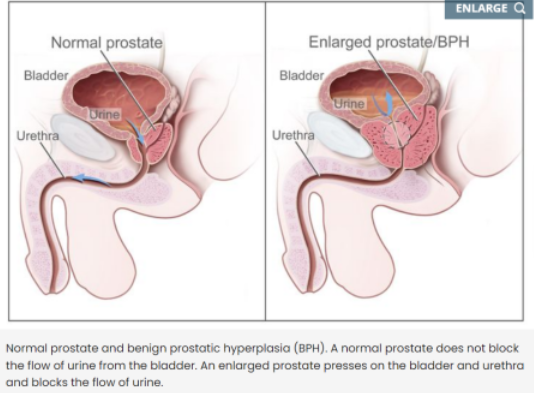Prostate Cancer
Home » Specialties » Prostate Cancer
Prostate Cancer
The prostate is a gland in the male reproductive system. It lies just below the bladder. It is about the size of a walnut and surrounds part of the urethra (the tube that empties urine from the bladder). The prostate gland makes fluid that is part of the semen.
Symptoms of Prostate Cancer
1. Trouble starting the flow of urine.
2. Frequent urination (especially at night).
3. Trouble emptying the bladder completely.
4. Weak or interrupted (“stop-and-go”) flow of urine.
When prostate cancer is detected in an advanced stage, symptoms may include:
1. Pain in the back, hips, or pelvis that doesn’t go away.
2. Shortness of breath, feeling very tired, fast heartbeat, dizziness, or pale skin
caused by anemia.

The symptoms of benign prostatic hyperplasia or of other problems in the prostate may be like symptoms of prostate cancer.
Diagnoses
1. Digital rectal exam (DRE): An exam of the rectum. The doctor or nurse inserts a lubricated, gloved finger into the rectum and feels the prostate through the rectal wall for lumps or abnormal areas.
2. Prostate Specific Antigen [PSA]: test that measures the level of PSA in the blood. PSA is a substance made by the prostate that may be found in higher than normal amounts in the blood of men who have prostate cancer.
3. Biopsy: Tissue is taken from the prostate to confirm the diagnosis. It can be done by a transrectal ultrasound guided needle. If cancer is found, the pathologist will give the cancer a grade which is called the Gleason score.
4. PSMA PET CT scan: An imaging procedure that is used to help find prostate cancer cells that have spread outside of the prostate, into bone, lymph nodes, or other organs. It is a whole-body scan.
Prostate Cancer Screening:
Tests are used to screen for different types of cancer when a person does not have symptoms. Regular testing of serum PSA can be done in old aged males to detect prostate cancers. If a PSA test is higher than normal, a biopsy of the prostate may be done.
Treatment Options:
1. Watchful waiting or active surveillance: Watchful waiting and active surveillance are treatments used for older men who do not have signs or symptoms or have other medical conditions and for men whose prostate cancer is found during a screening test.
2. Surgery: A complete removal of the prostate along with associated lymph nodes is undertaken in local/ locoregional confined tumors. This is called Radical Prostatectomy.
Transurethral Resection Of Prostate [TURP]: A surgical procedure to remove tissue from the prostate using a resectoscope (a thin, lighted tube with a cutting tool) inserted through the urethra. This procedure is done to treat benign prostatic hypertrophy and it is sometimes done to relieve symptoms caused by a tumor before other cancer treatment is given.
3. Radiation Therapy: Radiation therapy is a cancer treatment that uses high-energy x-rays or other types of radiation to kill cancer cells or keep them from growing.It is a tumor-directed therapy that is given to prostate ± lymph nodes to completely kill the tumor cells. It is done in the following ways:
SBRT: radiation treatment in which a larger than usual total dose of radiation is given once a day over a shorter period of time (5 days usually) compared to standard radiation therapy. It can be carried safely in low and intermediate-risk category patients.
Conventional Radiation: Regular protocols give radiation over a period of 4-5 weeks. The patient has to come daily for the treatment. Utilisation of treatment techniques like IMRT or IGRT can give highly conformal treatment with minimal side effects.
Post-op Radiotherapy: Radiotherapy can be required even after surgery based on high risk features defined in histopathology report.The treatment when indicated has to be given after discussion with the treating surgeon and radiation oncologist.
Internal radiation therapy: uses a radioactive substance sealed in needles, seeds, wires, or catheters that are placed directly into or near the cancer. In early-stage prostate cancer, the radioactive seeds are placed in the prostate using needles that are inserted through the skin between the scrotum and rectum.
4. Hormone Therapy and Chemotherapy: In prostate cancer, male sex hormones can cause prostate cancer to grow. Drugs, surgery, or other hormones are used to reduce the amount of male hormones or block them from working. This is called androgen deprivation therapy (ADT). Also in metastatic cancers chemotherapy may need to be given to control the disease.